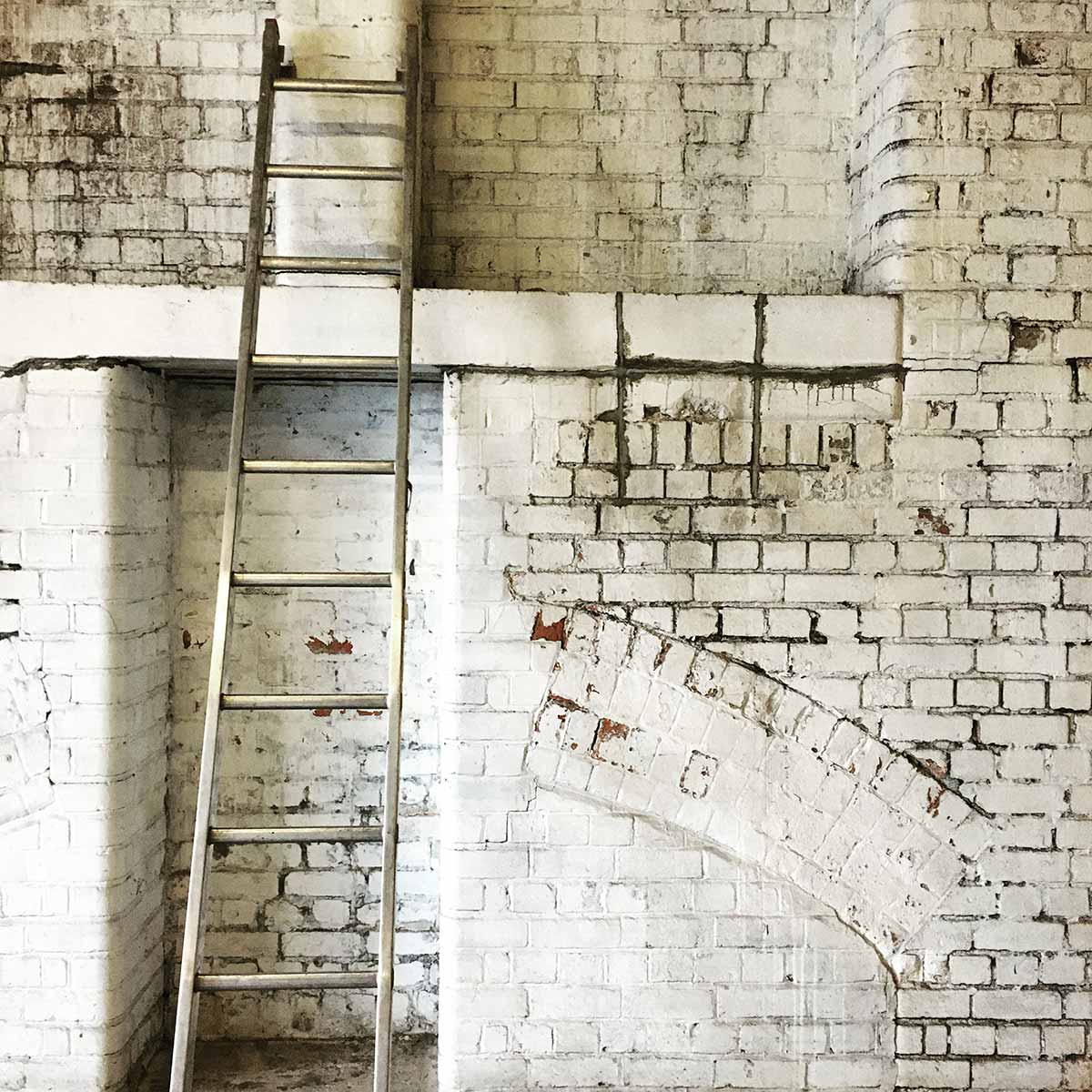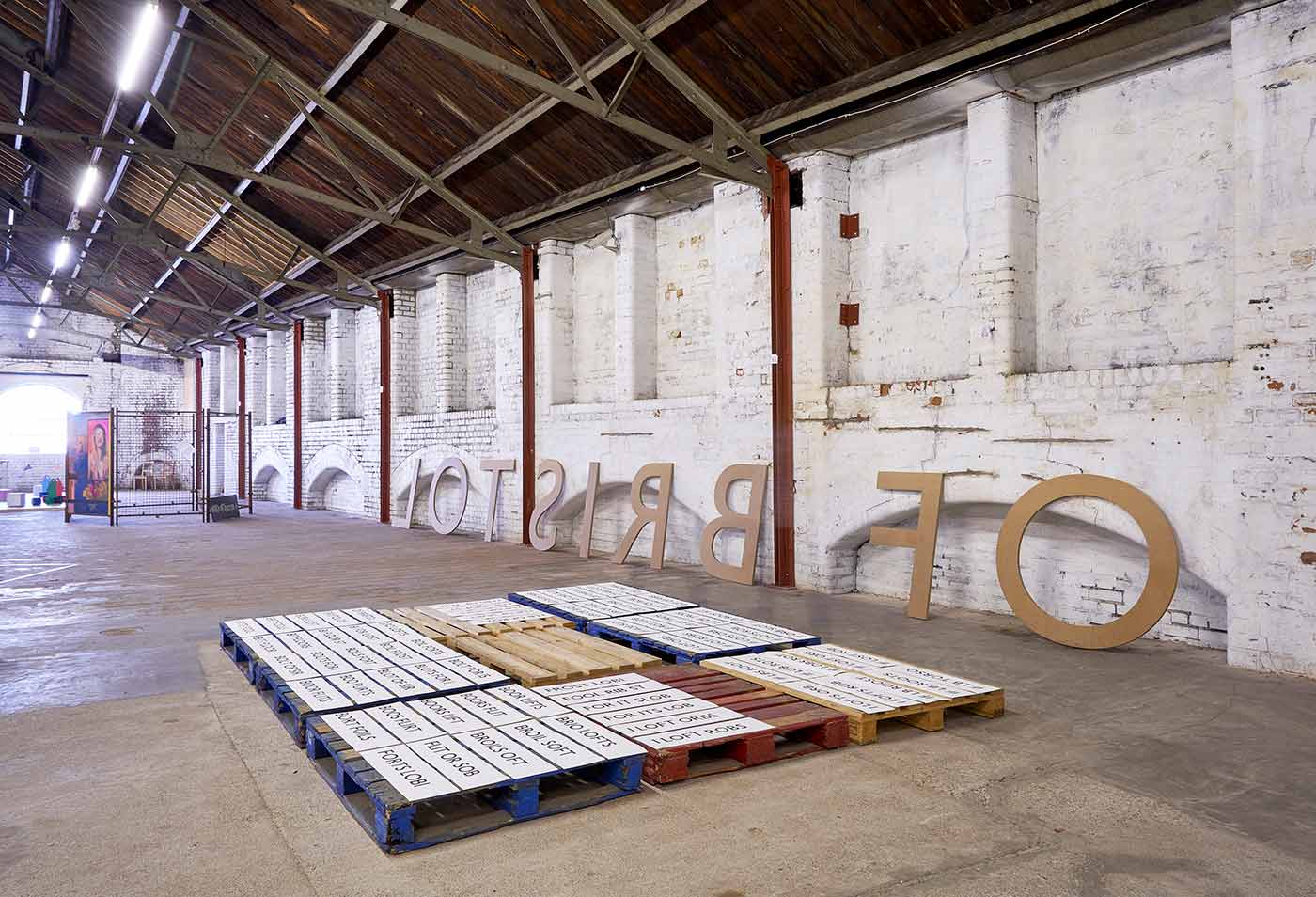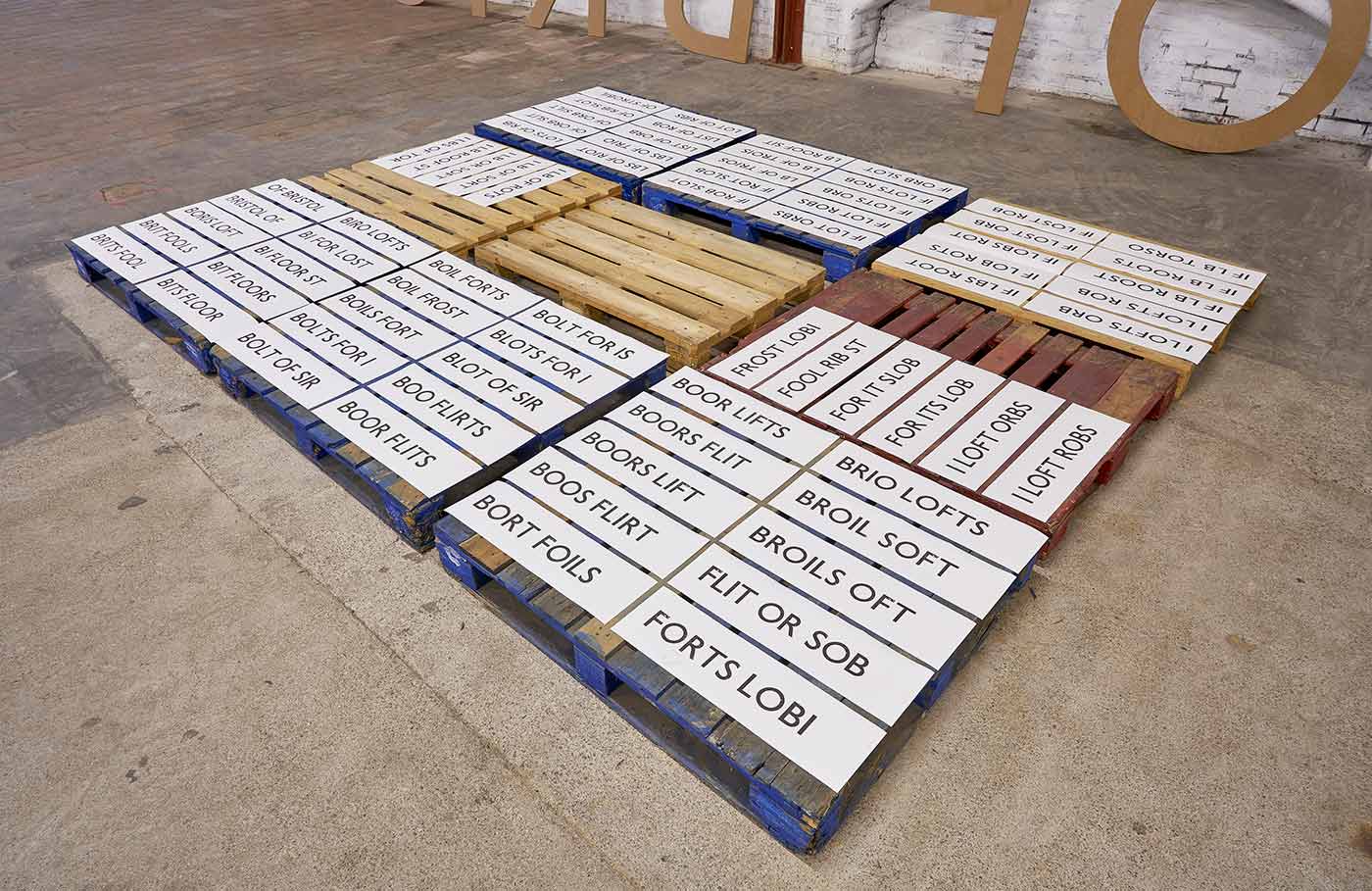OF BRISTOL
2020, PROJECT
OF BRISTOL invites the viewer to consider language, place and place-making. There are many alternative readings of a site, readings which are governed by why we come to a place, what place means to us as well as what we bring to a place and what we take from it. The 70 anagrams that stem from the 9 letters OF BRISTOL, rename, reframe, suggest and invite alternative readings of a site, of a city and its history.
I live in a converted part of the former Soap Works in the shadow of Gardiner Haskins. Each time I step from my flat I see OF BRISTOL, part of the Gardiner Haskins’ sign. This sign grounds me; it forms a locus, Gardiner’s was my department store, my local. Here I bought wine, tools, stationery, hardware, kitchen ware and domestic appliances.
For an artist working site-specifically, it is rare to be afforded the chance to work on a project so close to home. I am reminded of the rich manufacturing history of this area, where skills, industry, labour, and hierarchies within work – markers of social class were played out.
Through my practice I seek opportunities to engage with others, especially those who have skills in industries that are under threat. The project afforded me the opportunity to work with The Letter Press Collective at Centre Space, Bristol. We collaborated to produce the anagrams using an original Sans Gill wooden type. The large OF BRISTOL’s letters were CNC cut from a digital file at AMALGAM studios, also local.
OF BRISTOL
Further connections to site come from the history of this typeface. The type OF BRISTOL is Sans Gill, designed by Eric Gill. It was first used when hand painted by Eric himself for his friend’s publishing business in Park Street, Bristol in 1926
This landmark building has a long history and many relied upon it for their livliehood. From here goods went out into the world.
In a pause in its history we can consider
its past, present and future.
What is it that brings you here?
What do you take with you?
What ties bind you to place?
As a collective we consider the future of the arts within the city.
What possibilities lie in coming together?





